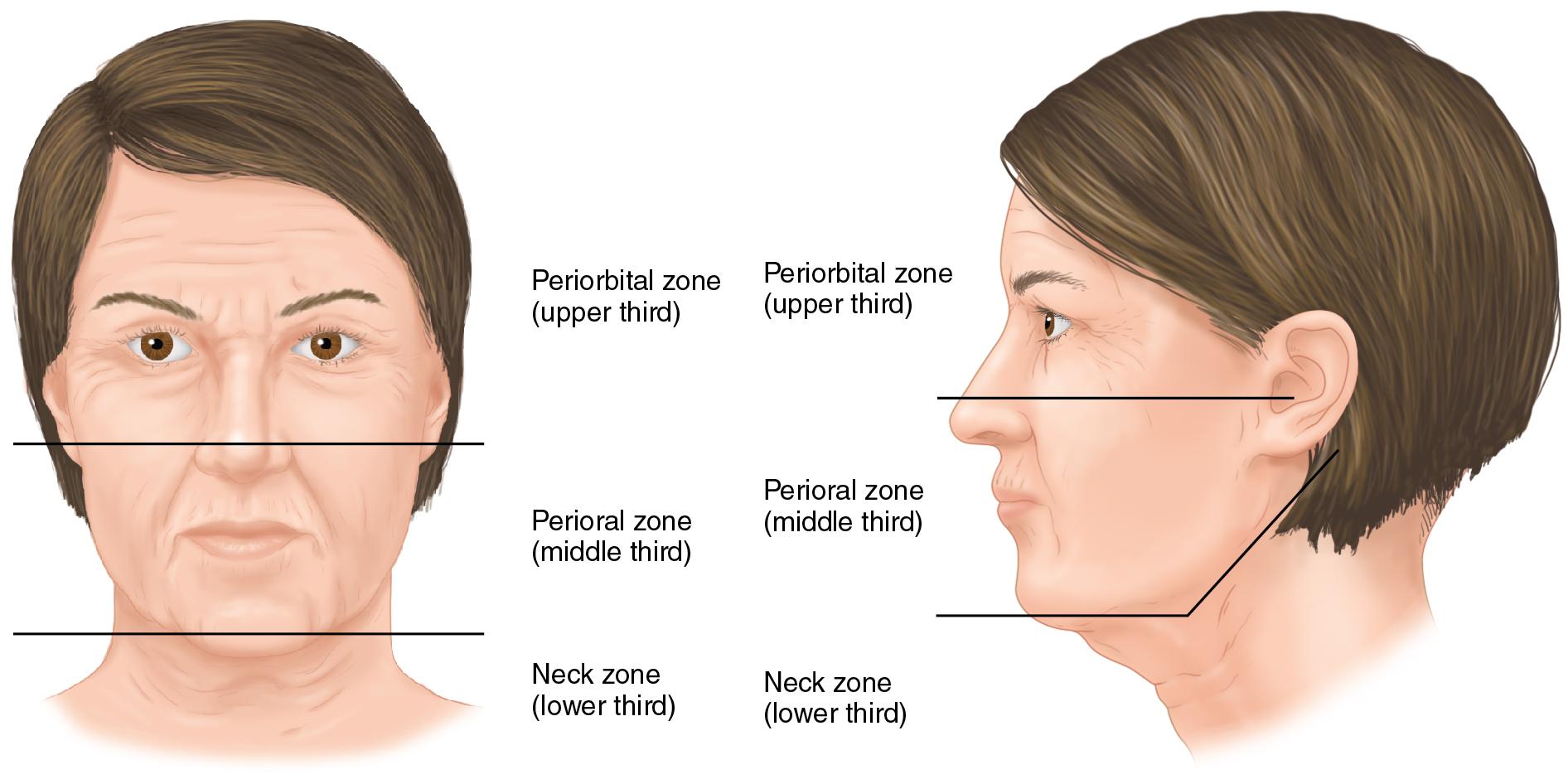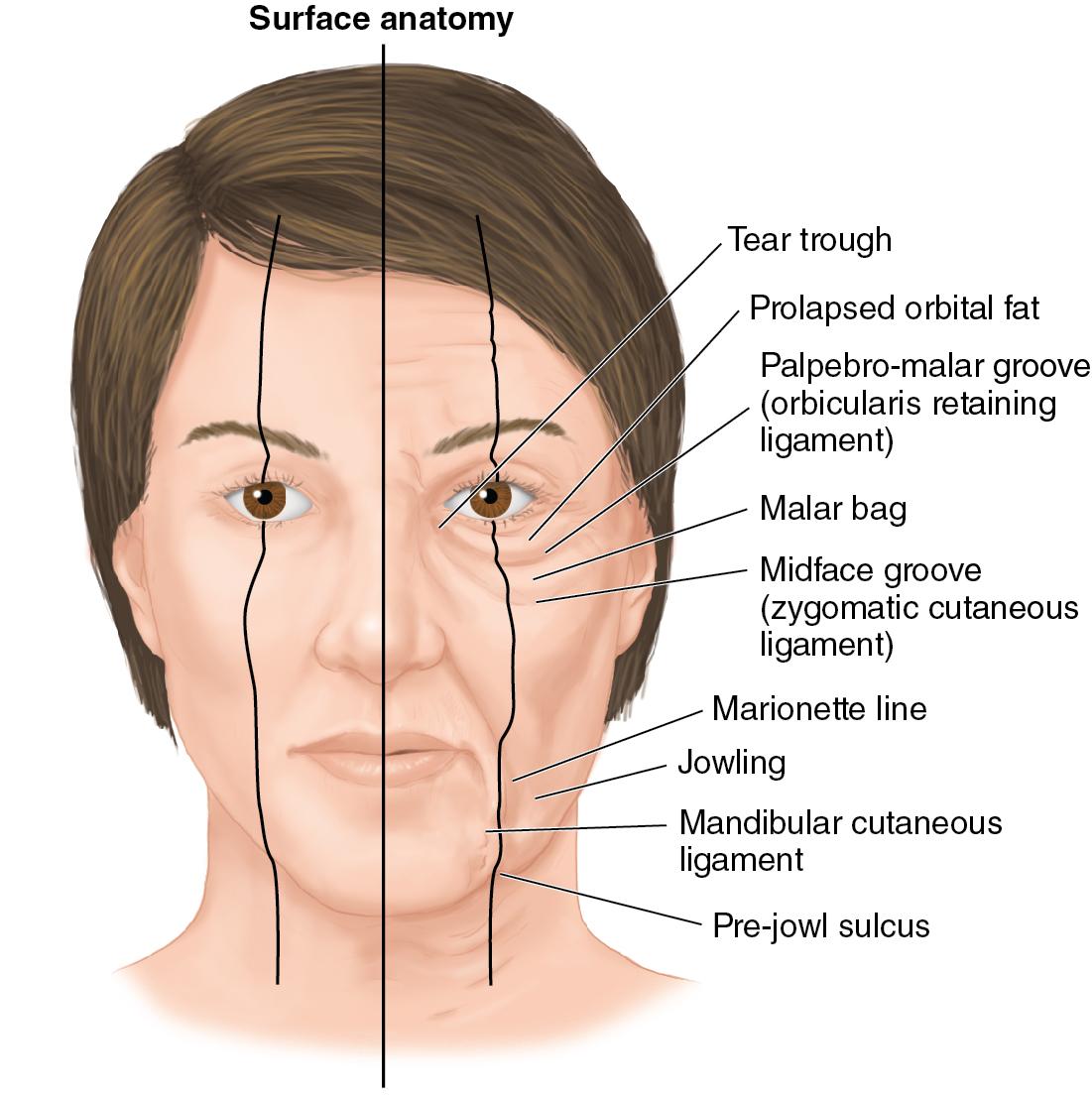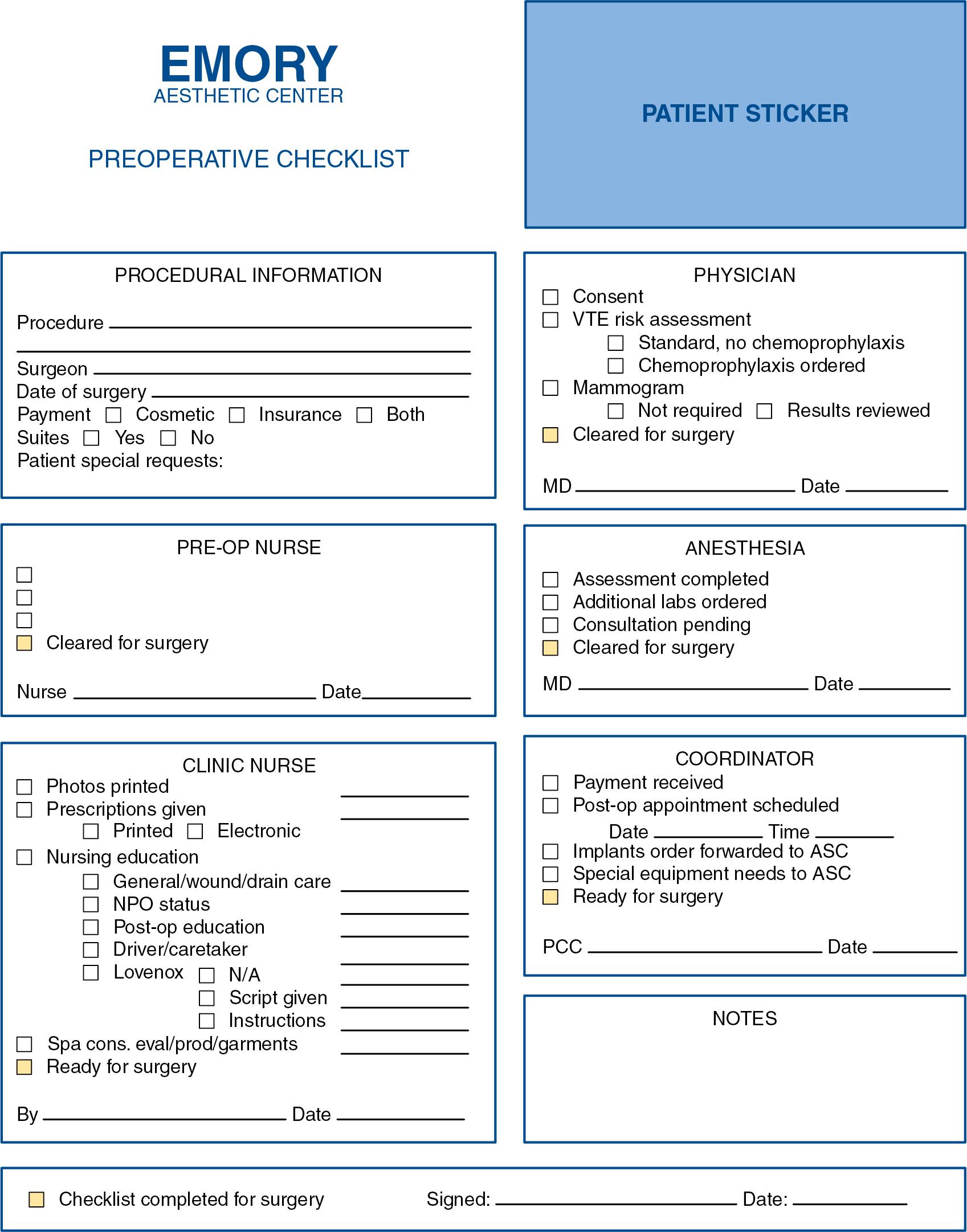Physical Address
304 North Cardinal St.
Dorchester Center, MA 02124
The soft tissues of the face are a complex arrangement of skin, subcutaneous tissue, muscles, glands, and neurovascular structures connected in several places to the facial skeleton by connective tissue, septa, and ligaments. The smooth, rounded contour of a young face progressively changes with age as the tissues suffer structural alterations. Various predictable surface, volume, and ptotic changes take place. Dyschromia, rhytids, loss of skin elasticity, soft tissue deflation, and descent are the most common signs of aging that we encounter during the assessment of a patient seeking facial rejuvenation.
Understanding the anatomy of facial soft tissues is a prerequisite to understanding facial aging and its effects on the different structures. Knowledge of the anatomy and the subtle changes it suffers over time is essential in making sound decisions and planning of any facial rejuvenation procedure.
A comprehensive evaluation sheet is filled out by the patient during the initial consultation. The questionnaire includes present and past medical conditions, previous surgical history, prior cosmetic treatments, current medications, and history of smoking. Intrinsic and extrinsic aging factors, such as sun damage, dietary habits, and routine skin care regimen, are specific details key to the evaluation. Other issues that may interfere with the surgical planning are previous surgical and nonsurgical procedures, including injectables, peels, lasers, medications affecting bleeding, and previous history of deep vein thrombosis/pulmonary embolism (DVT/PE). It is our practice to go over the intake sheet and review it with the patient in detail. Some patients are instructed to bring pictures from their 20s for assessment of their facial features and of the individual facial aging process. It is important to understand the patient’s motivation for aesthetic surgery, emotional state, social life, and the support system available after surgery. Daily work and leisure activities can also be impacted by facial procedures, and some patients will not tolerate the postoperative downtime required by certain procedures and would prefer to choose minimally invasive facial rejuvenation options over surgeries that require a long period of downtime.
The evaluation of the facial rejuvenation patient warrants assessment of the interconnections among the skin, fat compartments, muscle, and connective tissue. Skeletal asymmetries, previous facial trauma, severe sun damage, Romberg syndrome, xeroderma pigmentosum, cutis laxa, and Ehlers-Danlos syndrome can all contribute to facial aging and should be recognized and treated accordingly.
The evaluation begins with a visual assessment of the overall surface changes of the face. A systematic method of assessment includes evaluation of the face globally from top to bottom, dividing it into thirds. Starting from the hairline (trichion) to the chin (menton), or vice versa, can make the process objective and standard and facilitates communication and medical records. All the changes on the skin surface, facial volume, and positions of symmetrical facial structures are noted. The neck segment is considered the lower third in this facial analysis ( Fig. 34.1 ).

Starting with skin surface changes, the Fitzpatrick classification is a useful guide to define the skin type and plan procedures that will affect skin pigmentation. Dyschromias are a common concern in patients who seek facial rejuvenation, and the classification of the skin type will guide the choice of resurfacing procedures that could benefit the patient.
The next step is the evaluation of skin quality and elasticity, presence and degree of wrinkling, and whether the rhytids are dynamic or static. Assessment of volume loss and evidence of soft tissue atrophy in all segments of the face comes next and includes possible facial bone reabsorption and deflation of the superficial and deep fat compartments. The presence of folds and depressions at the level of the retaining ligaments of the face are consistent hallmarks of facial aging and can be predicted ( Fig. 34.2 ).

Presence of prominent submandibular glands and digastric muscles should be assessed routinely. Demarcation of the cheek–lid junction and blunting of the jaw line due to tissue deflation and descent are common findings in the aged face. Finally, we look for changes in the position of the structures, asymmetry of eyelid positioning, eyelid ptosis, lower eyelid vectors, smile asymmetries, aging nose, and neck deformities. This global volume and positioning assessment is fundamental to defining the need for “lift and fill” procedures, such as combining a facelift with fat grafting or simply tissue repositioning. Fig. 34.3 shows a soft tissue assessment checklist that is helpful in identifying the most common components of facial aging.

Preoperative evaluation is mostly performed through a thorough history and physical examination. Safety is an important part of planning an aesthetic procedure, and evidence-based medicine helps decide which preoperative tests are needed. If the patient has chronic medical issues the preoperative evaluation may include cardiac clearance, radiography, hematology consult, or an adjustment of current medication use. However, if the patient is healthy and younger than 50 years of age, there is no indication for any preoperative test, according to the American Society of Anesthesiology (ASA) preoperative evaluation guidelines.
In our plastic surgery center all patients are scheduled for a formal preoperative visit with the surgeon, the nursing team, and the anesthesiologist 2 weeks before the procedure to review all the details of the surgical procedure, provide prescriptions, plan for medication discontinuation, perform the venous thromboembolism (VTE) risk assessment, evaluate the need for preoperative testing, address special equipment needs, confirm surgery payment, and any other preoperative requirements ( Fig. 34.4 ).

Become a Clinical Tree membership for Full access and enjoy Unlimited articles
If you are a member. Log in here